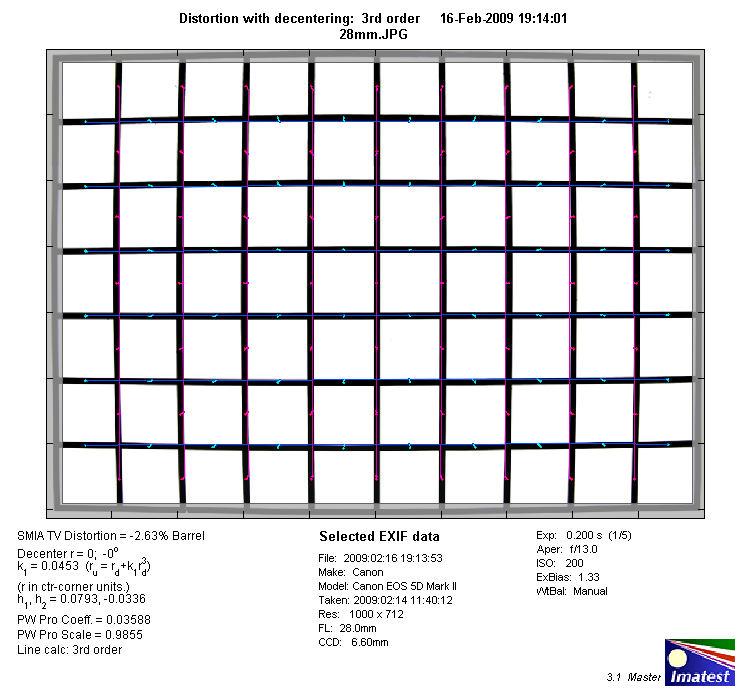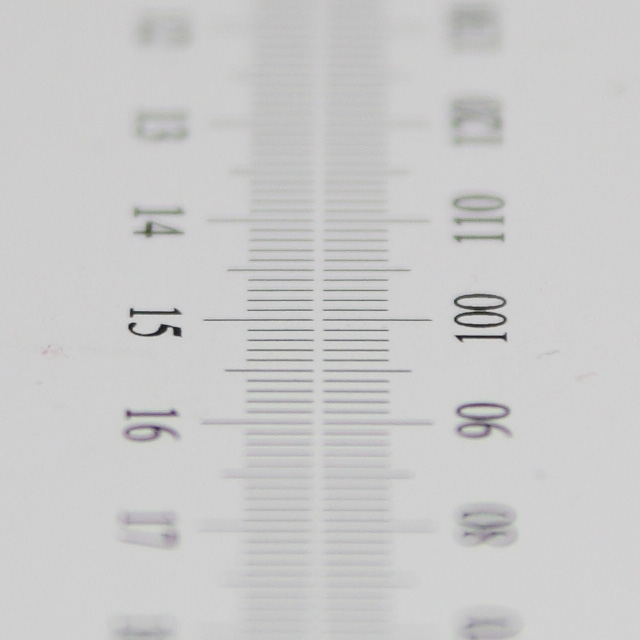|
Tamron AF 28-75mm f/2.8 SP XR Di LD Aspherical (IF) - Review / Test Report - Analysis |
|
Lens Reviews -
Canon EOS (Full Format)
|
|
Page 2 of 3

Distortion
The Tamron 28-75mm XR produces a pronounced (~2.6%) barrel distortion at 28mm changing to slight pincushion distortion at 75mm (~1%). At 40mm both force even out resulting in distortion-free images. A quite decent performance for a standard zoom lens here.
|
Move the mouse cursor over the focal length text marks below to observe the respective distortion
|
| 28mm |
40mm |
75mm |
|

|
The chart above has a real-world size of about 120x80cm.
Vignetting
The Tamron struggles with very heavy vignetting at max. aperture peaking beyond ~2EV at 28mm. The problem is reasonably well controlled at f/4, acceptable around f/5.6 and good by f/8. All in all an expected result for such a lens on a full format DSLR.

MTF (resolution)
The Tamron AF 28-75mm f/2.8 SP is a stellar lens when used on APS-C DSLRs but things aren't all that rosy anymore on a high MP full format DSLR. The center resolution is very good to excellent throughout the range but the borders and more so the extreme corners leave something to be desired at f/2.8 - especially at 40mm. The situation improves when stopping down and the optimum is generally reached at f/8 with good to very good borders and good extreme corners.
The tested sample had a weakness on the left side of the image field (centering defect). A perfect sample may produce better results at large aperture settings.
Please note that the MTF results are not directly comparable across the different systems!
Below is a simplified summary of the formal findings. The chart shows line widths per picture height (LW/PH) which can be taken as a measure for sharpness.
If you want to know more about the MTF50 figures you may check out the corresponding Imatest Explanations
Chromatic Aberrations (CAs)
The lens produces a decent degree of chromatic aberrations (color shadows at harsh contrast transitions).
The average CA pixel width at the borders remain below 2px at 28mm - this is visible in field conditions but acceptable within the full format scope. Lateral CAs are a lesser issue at 40mm and more so at 75mm.

Bokeh Fringing (Longitudinal Chromatic Aberrations (LoCA))
LoCAs (non-coinciding focal planes of the various colors) are primarily a problem with ultra-fast prime lenses. The Tamron may be a comparatively fast zoom lens but it doesn't really run into this issue. You can only spot marginal traces of bokeh fringing at f/2.8 and they're already gone by f/4. This is nothing to worry about.
|
Move the mouse cursor over the f-stop marks below to observe the respective LoCAs
|
| f/2.8 |
f/4 |
|

|
Bokeh (out-of-focus blur)
The Tamron produces an acceptable bokeh for a zoom lens but it has its flaws. Out-of-focus highlights show a slight onion structure and when looking at the very borders the circles deteriorate somewhat (they appear to be "cut" - see the top-most crop here). The blur is quite smooth in the foreground but rough in the background. There's a bit of smearing towards the extreme corners.

|